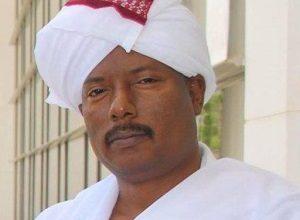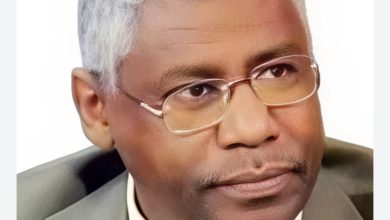Sirr Al-Khatim Al-Khalifa Revisited: Hamdok

By: Abdallah Ali Ibrahim
I spoke with Mr. Abdalla Hamdok for the first time a few months ago in a Zoom meeting. I told him that comparisons were being drawn between the October and December revolutions, both in terms of similarities and differences. However, I pointed out one thing I hoped would not repeat itself: what happened to Sirr Al-Khatim Al-Khalifa, the Prime Minister of the October Revolution.
The counter-revolution tightened its grip on Al-Khalifa, accusing him of allowing excessive communist influence in his cabinet and in the revolution’s political incubator, the “Front of Professional Associations.” This pressure eventually forced him to resign on February 18, 1965, following a show of force by the Ansar forces marching through the capital’s streets. In his resignation letter, Al-Khalifa expressed satisfaction with his government’s achievements in implementing its transitional program, despite serving for just three and a half months. He noted the growing division among the signatories of the revolution’s charter—some accused the government of deviating from the revolutionary path, while others claimed it remained committed to it. This political discord, he stated, had poisoned the political atmosphere. As a result, he decided to resign “in the interest of the country’s welfare, safety, and to spare its people further division and conflict.”
The Sovereignty Council accepted his resignation and tasked him with forming a new government—one that eliminated the workers’ and farmers’ seats in the cabinet and increased the representation of major parties (the Umma Party and the Democratic Unionist Party) from one ministerial seat to three. From then on, these parties dominated the government.
I believe the picture is clear now.
Unlike Al-Khalifa, Hamdok did not resign from his premiership. Instead, he remained a captive within the house of his own coup, only to return as Prime Minister of a different revolution—or a counter-revolution, if you prefer. This faction imposed its program on him, one it had long proclaimed publicly. Hamdok accepted the very logic of the coup against him. The agreement he signed was entirely founded upon the decisions of the Commander-in-Chief on October 25—the very decisions meant to extract the country from the bottleneck of Hamdok’s first government. The agreement did not merely enshrine the entire program of the counter-revolutionary forces, but it also ensured that these forces were the only ones present at the signing ceremony, witnessing Hamdok sign his own contract of submission.
This contract of submission pleased the tribal leaders of eastern Sudan and the notables who had blocked the country’s main port, as it acknowledged their demand for preferential treatment while reaffirming the constitutional document’s authority over the transitional period. On another front, the agreement secured the counter-revolutionary forces’ demand to end the political monopoly of the Forces of Freedom and Change (FFC), known as the “4 Long,” by calling for amendments to the constitutional document to include those who had been “excluded” (though they suffered no real grievance). The agreement also outlined the formation of a government of “independent national technocrats”—or as Al-Tom Hajo likes to ramble, a “technocratic government,” despite this phrase not appearing in either the original or the amended document. It is ironic that the armed movements allied with Burhan were the ones who insisted on removing the word “independent” from the text, as independence is something they themselves lack.
The agreement also contained the counter-revolution’s worn-out argument that elections should be held on time—not as a constitutional obligation, but as a way to expose the true size of the FFC. Additionally, it sought to appease traditional leadership structures, such as tribal chiefs and Sufi orders, many of whom (like Al-Tayeb Al-Jed) were allies of the military, by mentioning them as part of the forces to be included in a forthcoming political settlement.
Thus, it was no exaggeration when people said yesterday’s agreement “legitimized” the coup rather than reversing it by restoring the pre-October 25th status quo and erasing its effects.
To be continued…
(*Initially, I had a more positive view of the agreement after it was announced, and I even discussed it with some acquaintances—before I sat down with the devils in its details.)



